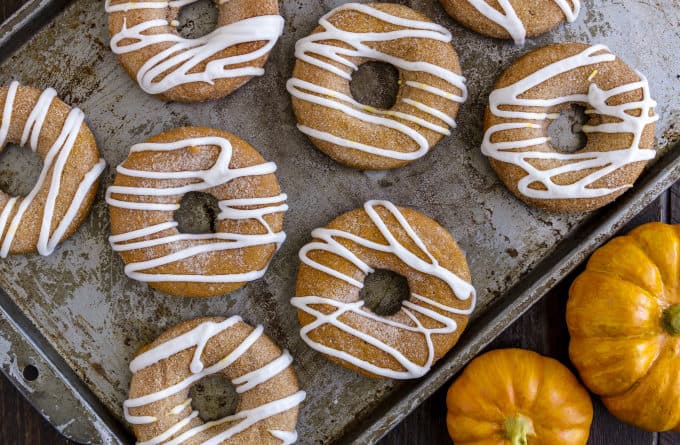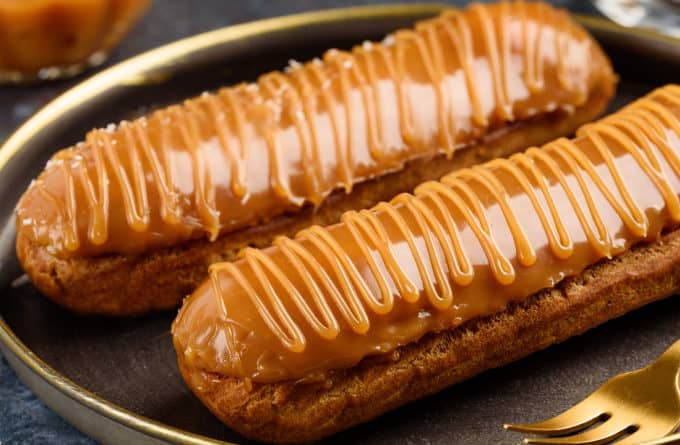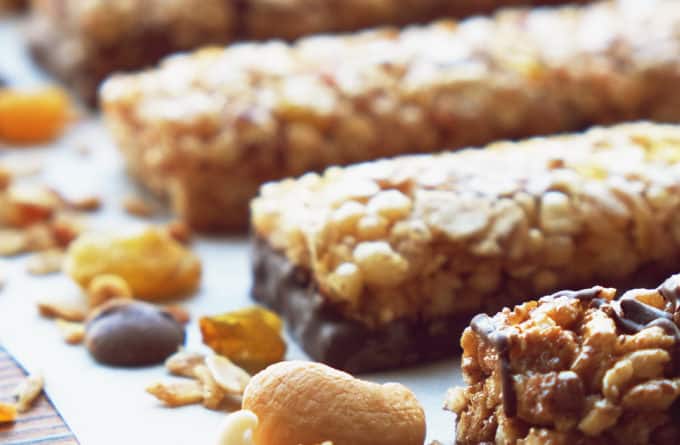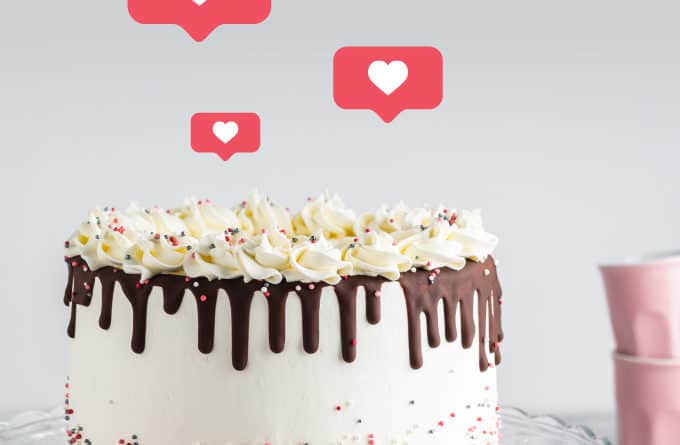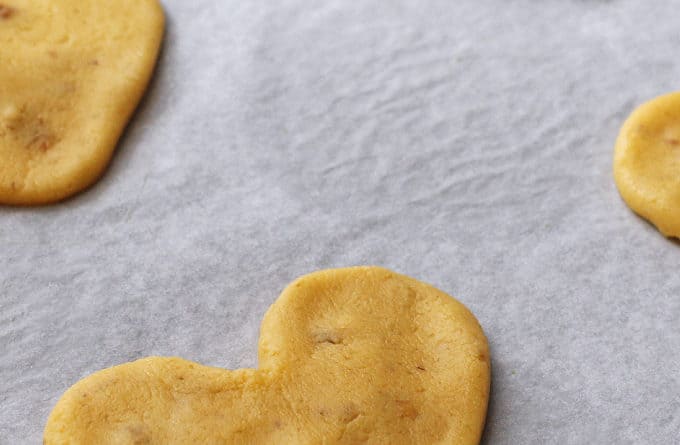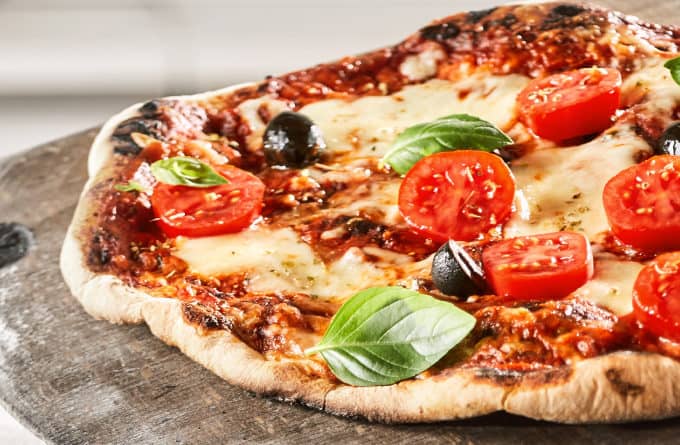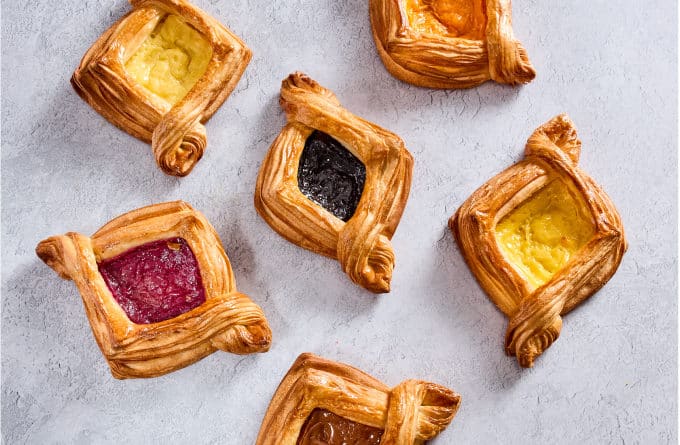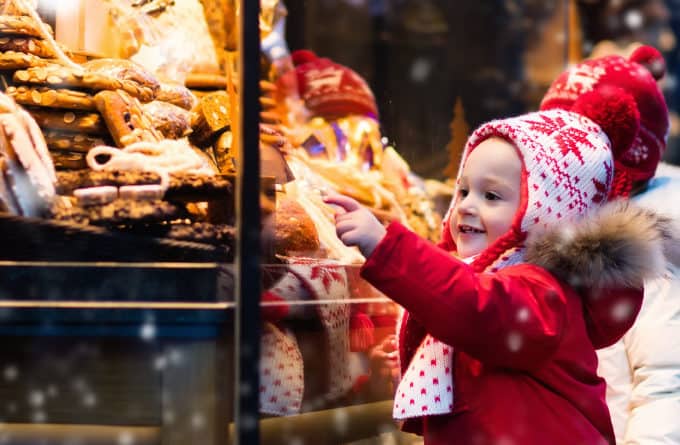
Caramel has long been a favourite, and primary, ingredient in confectionery and desserts around the globe for many years.
But why has caramel captured and kept our favour? What does this ingredient offer us as bakers that keep us inventing new ways to use it again and again? Here’s what we think.
Caramel is one of the most desired sweet flavours with demand only increasing as time goes by. The ingredient finds its way into new food trends year after year, increasingly affirming its presence in patisserie counters all over the world.
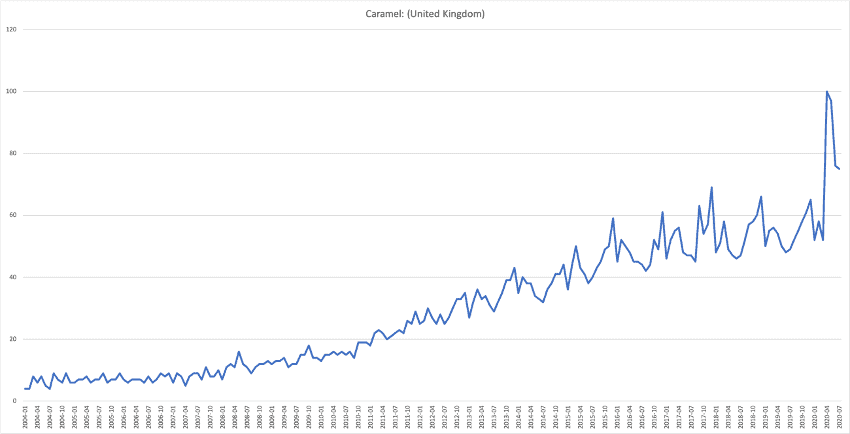
Trend data: via Google Trends
Caramel finds its way into a variety of desserts and sweets including:
- Crème brûlée
- Toffee
- Butterscotch
- Pralines
- Nougats
- Brittles
- Crème caramel
Not to mention numerous fillings and toppings. Our obsession with this moreish substance doesn’t look ready to stop.
But all this infatuation begs the questions: what is caramel? How are we using it? And what has it still got to offer us?
Characteristics of caramel
One of caramel’s main ingredients in its natural form is granulated sugar (sucrose). In this form, there is little to no smell, and it has a simple sweet taste. We use it in sweetening our recipes and increasingly our drinks. Heating sucrose alone – such as on the surface of a crème brûlée – is known as caramelisation, a process perfectly suitable for caramel in its most basic form. However, the process of creating an indulgent “caramel or toffee” is much more complex and involves the chemical process known as the Maillard reaction.
An important ingredient in this process is condensed milk or cream, and butter. These ingredients don’t only provide the inherent creamy, rich texture and flavour that dairy products offer, they’re also a source of protein. These amino acids must be present for the Maillard reaction to take place.
As sugar (sucrose) is heated, a big change happens, it melts and breaks down into glucose and fructose. These are known as ‘reducing sugars’, the other component – along with amino acids -that is required for the Maillard reaction to take place.
Through further heating, this reaction can now take place, and the ‘caramel’ darkens bringing with it a new series of deeper aromas. These aromas bring a raft of new sensory experiences (research reveals up to 80 per cent of flavours we taste come from smell).
This new taste sensation is decreasingly sweet and increasingly toasty the higher the temperature rises. This refined cooking time, temperature and pressure, among other factors, determine caramel’s distinctive characteristics—opening the door for a whole host of caramel applications, depending on customer preferences and application processes.
When zoomed into Bakels caramels under a microscope, they would comprise of fat dispersed in water, stabilised by emulsifiers found within a sugar (sucrose) network. With manipulation of the ingredient compositions and processing parameters, we can create a range of “True” caramels, with distinctive qualities to suit you and your customer’s needs.
Flavour, texture and colour are all attributes Bakels can play tunes within creating truly unique caramels. Creamy, sweet and toasty textures; short, stringy, jelly-like, flowable, saucy textures; light beige through to dark colours and everything In between mean customers can offer signature caramels to set their patisserie offering apart from competitors.
Get Bakels articles delivered to your inbox
We’ve enjoyed caramel for hundreds of years
Sources report that the first discovery and use of caramel was in Arabia around 1000 AD. It was thrust onto the taste pallets of America as far back at the 17th century when settlers were said to cook water and sugar together.
Its popularity spread across the US and into wider Europe around 1850 when Hershey began producing and shipping their sweets.
Since then, we’ve loved and craved for the ingredient. But how are we using it now?
Flavour variations
It’s predicted that in the UK alone, the caramel ingredients market is set to rise by nearly 7% before 2021*. This trend is ever apparent in the flavour variations brought to the table.
The variations artisan bakers are creating seem to be endless. Website Trend Hunter offers a list of thirty flavour variations that include:
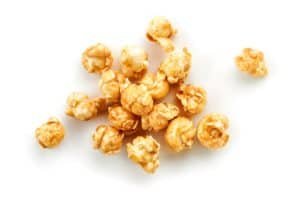
- Almond caramel
- Salted caramel
- Caramelised pineapple
- Pecan and rosemary caramel
- Caramel cider
- Caramel espresso
- Coconut caramel
- Vegan caramel
- Spicy caramel
And the list goes on. This ingredient’s ability to pair with and enhance existing flavours both naturally sweet and savoury is unmatched. For this very reason, you can see why new trends and tastes are being designed, created and distributed year after year—with success, too.
Health and wellbeing
Millennials (born from 1980 to the mid-1990s) and Centennials (born in the late 1990s and early 2000s) are increasingly considering products that they feel good about buying. A holistic approach drives them, and COVID has only enhanced this characteristic.
They vote with their wallets, seeking goods that align with their values and ethics.
Caramel options must be available to cater for these needs. Bakels low sugar caramel delivers a satisfying balance of pleasure and wellness, while bespoke vegan caramel allows you to provide new lines which appeal to consumers adopting a vegan lifestyle.
These combinations In the True Caramel range are sure to fall into good favour with these millennial and centennial consumers.
It’s in, and on, our drinks
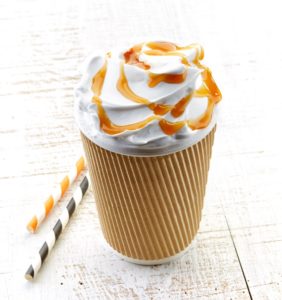
Caramel has also long been a staple choice to add to our drinks, cold or warm. Milkshakes, and coffee alike, have both fallen to the power of caramel. But not just as a syrup or flavour, but as a topping.
With caramel cappuccinos, frappuccinos or macchiatos, the coffee house options are endless and popular—each drink just a different partnership with caramel that keeps consumers coming back for more.
Caramel toppings on milkshakes, coffees and hot chocolates also see considerable popularity, with salted caramel frappes and lattes being among some of the most sought after.
With health and indulgence brands alike embracing caramel flavouring, once again it seems clear caramel is here to stay.
Caramel coatings: smooth, crunchy, partnered, alluring
When it comes to adorning a pastry, caramel offers the baker a variety of options.
Whether it’s sprinkling crystallised caramel, drizzling a sweet sauce, filling with a rich Millionaires Caramel or decorating with smooth and crunchy features – the possibilities are endless.
These toppings can be partnered with a variety of flavours to add allure to your sweet lines. Like we mentioned before, the flavour combinations work with sour, savoury and fruity ingredients all to get your recipe to stand out from the crowd.
Take one of our recent launches, for example; Raspberry Millionaires Caramel PF, free from palm oil and taking on a deep raspberry colour flavour and natural colour. The tantalisingly smooth texture paired with the fruity raspberry flavour provides bakers with the perfect addition to spring-summer seasonal lines, spurning twists on old favourites such as Millionaire’s Shortbread and more.
It features in the grandiose design
Something else about caramel that cannot be matched is its ability to decorate.
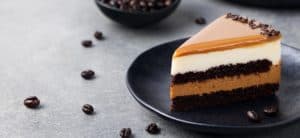
There’s nothing that makes a sweet good stand out quite so much as an elaborate caramel design – otherwise known as sugar spinning.
These quaint and delicate designs can either be used to add something extra atop a cake, beautifully encase a croquembouche or add a personal (or thematic) touch to sweet goods and confectionery.
Caramel is here to stay, for years to come
The global caramel ingredients market is expected to grow by 7% by 2021, to over £2 billion*, with positive growth across colours, flavours, inclusions, fillings and toppings, among others.
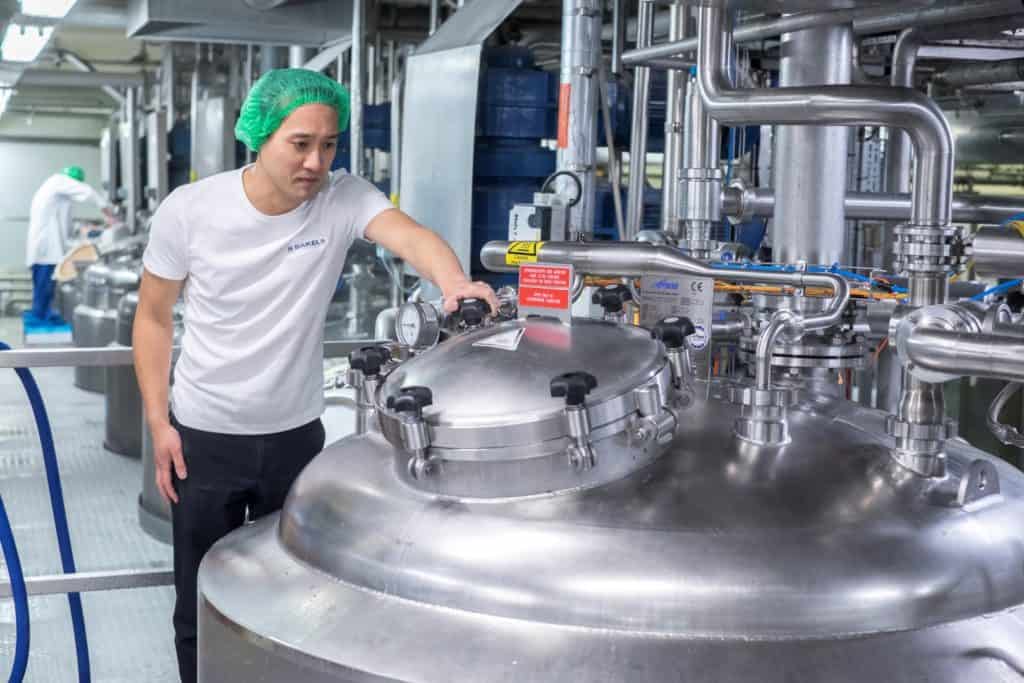
In 2018, we expanded our True Caramel range to reflect the interest in the market, so we could continue to service our customers with the best products and help their bakeries grow with the finest patisserie ingredients. Producing to customers all over the world means we understand local needs and provide caramel solutions to serve specific consumers.
Our team of caramel experts work in partnership with customers to design caramels to fit your applications and provide caramel pairing solutions to create signature creations. Get In touch today to kickstart your caramel exploration.
*Data source: Markets & Markets (2017) – Caramel Ingredients Market – Global Trends & Forecast to 2021.






